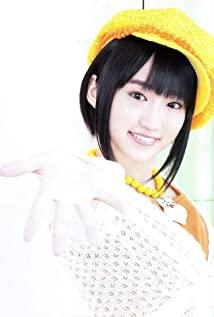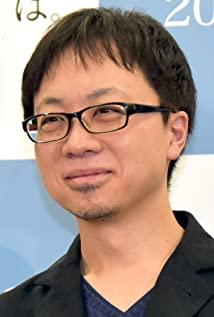"Your Name" will become the box office champion of this year without any suspense. The box office growth rate in just two weeks before the premiere has surpassed all animation works in the past decade. Including Hayao Miyazaki's "The Wind Is Rising", "Goldfish on the Cliff" and Detective Conan, Doraemon theatrical version and so on. So far, the total box office has reached 10 billion yen. This also means that this is the first non-Ghibli animation to enter the ten billion box office championship ranking. Not only did he achieve amazing results at the box office, he also caused quite a stir in the film critics. "Cinema Daily" specially published the latest animation special for this purpose. Even the academic "Eureka" magazine also spent the entire issue discussing this topical work. It can be said that three years after Hayao Miyazaki's final work "The Wind Rises", there has never been a work that has received such attention as "Your Name". If you can't get rid of the influence of Hayao Miyazaki, "Children Chasing Lost Voices" (2011) is a failed parody. Then "Your Name" is a highly self-reconstruction that combines elements of Xin Haicheng's own work. Not only that, but the unorganized narrative and lack of character modeling that have been easily criticized are also completely absent in this film, reaching an unprecedented new height in Xin Haicheng's work. First, the interchange of the body Although there are very few characters in "Your Name", there are mainly two heroes and heroines. However, the complex and sophisticated structure makes the film show the temperament of a blockbuster. Mitsuba, a high school student in Isomori Town, Gifu Prefecture (voiced by Moe Kami Shiraishi), hopes to get rid of the monotonous life as soon as possible, and as the eldest daughter has to inherit the troubles of the ancient shrine ceremony. "Turn me into a handsome guy in Tokyo in my next life" Mitsuba shouted into the distance. Just one morning before the comet is about to visit the earth, Mitsuba's dream came true/a word came true, and in the dream, he exchanged their bodies with Taki (Suke of Kamiki), a high school student in Tokyo. Mitsuba entered Taki's body and crossed to Tokyo, while Taki changed to Mitsuba's body and came to Itomorimachi. But the people around did not notice anything unusual. The various embarrassments and embarrassments brought about by the exchange of bodies have been sidelined by the surprised reactions of the people around them. It seems that after Mitsuba entered Taki’s body, because of the sudden increase in female power, he acquired the senior whom Taki has always been in love with (Masami Nagasawa). Voice dubbing) goodwill. And helped Taki bring the first date in his life. The next day after the exchange, the two will return to their normal lives. Afterwards, the two people were so ashamed to realize that each other had done all kinds of absurd things with their own bodies, and they couldn't help being even more funny and cute. It is precisely under such an alternating movement of interchange and contrast that Xin Haicheng laid out the comic and absurdity of the first half very well. In terms of narrative structure, the film consists of two parallel lines of Sanye and Taki at the same time. However, the two lines seem to be equal, but both the distribution of viewpoints and the proportion of the screen show the difference between the main line and the auxiliary line. Before the exchange of bodies, Mitsuba's daily life and campus life were emphatically described to highlight her vision of Tokyo city life. And Mitsuba entering Taki's body is more impressive than the various life episodes that occurred after Taki entered Mitsuba's body. It can be said that Sanye's perspective dominates the rhythm of the first half of the film. This may be due to the fact that Taki's character setting is more dramatic. But more importantly, for the second half, contrast with the reversal of Taki's main perspective. At the same time, it is no longer just the exchange of space, but also introduces the dimension of time. Second, everything is a knot. Whether it is the protagonist or heroine in the play, or us as the audience, we all think that the two people's bodies are exchanged in different spaces, that is, between Tokyo and Saitama Prefecture. Until when Mitsuba was wearing a yukata and saw the comet fall, the screen switched to a scene where Taki could no longer contact Mitsuba (as a time prop that transcends space-the loss of the mobile phone implies that the two are no longer in the same time dimension. Infinitely magnifying the question of the time and latitude of the mobile phone is the debut novel "Voice of the Stars" (2002)). This is the demarcation point. The exchange of the two bodies begins to stop. The lines finally started to converge. With his memory, Taki found Lake Suwa in Itomori Town that he had seen in his dream. But what is unbelievable is that as early as three years ago, this place has been reduced to ruins because of the fall of the comet. However, despite the opposition of his companions, Taki walked into the cave of the shrine alone the next day and drank the Kou 噛み wine (a kind of rice, grain, etc.) that was once drunk in the ceremony during the ceremony, and then spit out the fermentation. The ancient way of making wine). The exchange of drinking also happened. Previously, when grandma (acting as a prophet and the only person who saw that Sanye’s body was swapped) took Sanye sisters to Moriyama to worship the gods, she explained it with a water-drinking example. The meaning of 结び (结). "The connection of a knot is a knot, the relationship between a person and a person is a knot, and the passage of time is also a knot. It is the same word, and it is the power of God." Everything in the world is The knots are all connected in endless circulation. It was here that Taki accidentally slipped and fell while preparing to get up, and Makoto Shinkai used a long slow-motion camera to fully show the scene Taki saw when he was suspended in the air. Falling comets, transmitting brain nerves, scattered knots, and even the umbilical cord cut by the mother of Sanye after giving birth. These red lines, which are also "knots", fly in the air, twist and twist, sometimes return to the original shape and then reconnect (the artistic beauty of animation as a line can be said to reach its extreme at this moment). Because Taki drank a mouthful of wine, gained the power of the gods to cross again, and reached a physical exchange with Mitsuba. Although Taki came to Shimori Town where Mitsuba was located, they were already under the same space, but they were still three years apart. Standing in the circular Suwa Lake and running back and forth, looking for the other's Taki and Mitsuba, they could only vaguely perceive the other's existence. And just as the sun was about to set in the west, they finally saw each other. "At dusk between day and night, the outline of the world becomes blurred, and people may encounter ghosts." What the teacher said in the Manyo Group class has already paved the way for this moment. The dream lovers who have traveled through three years of time and space finally meet, but it is only a momentary short. After dusk, Mitsuba suddenly disappeared, leaving Taki standing alone. The small theme of emotions between men and women is directly connected with the world crisis, that is, the major theme of the destruction of the town and the fall of the comet, which is the main feature of the genre world system. But the difference from the previous works of Xin Haicheng's World Series is that this film focuses on the emotions between men and women, and the ending also comes down to the fate of the individual. It's like, after passing by countless times, Taki finally met Mitsuba in Tokyo. The depth and sense of reality brought by the stairs as the place where they meet is in sharp contrast with the ambiguity of time and space under the circular plane of Lake Suwa. It seems to remind us that this is no longer an encounter across time and space, but a reunion that really happened in the present. Third, facial animation as a landscape is different from a movie. You only need to place the camera in front of the subject to instantly image it. Every stroke in the animation works requires the creator to create it himself from scratch. Therefore, the time cost of general animation creation is much higher than that of movies. The consumption of time cost is often recovered through secondary profit from peripheral products produced by character modeling. (Imagine how long-term benefits the Totoro's character modeling brings to Ghibli!) Therefore, under the trend that character modeling is valued, Xin Haicheng, as a creator who specializes in landscapes, can be said to be one of the few and an exception. However, Xin Haicheng did the opposite, and conquered many audiences with a very realistic, meticulous and beautiful style of painting. "Second speed of five centimeters "(2007), the rain of cherry blossoms scattered, the quiet city covered with white snow. In "The Garden of Words" (2013), the freshness of rain hitting the leaves on the pool surface, the white clouds floating after the rain on a sunny day, etc. are the best wallpapers. But on the other hand, the characters in Xin Haicheng's works are often pointed out that people feel lack of movement and vitality, and sometimes even just a few strokes are as abrupt as symbols. Indeed, looking at all the past works of Xinhaicheng, there are almost no descriptions of human faces (in the early works). This may be to avoid what I am not good at, but in fact, for animation, how to express the character's face is actually not an easy task. Like Dreyer's "The Dilemma of Joan of Arc" (1928), only the close-up of Joan of Arc is used to show all movies, which is impossible to achieve in animation. Because no matter how dexterous the hand is, it cannot outline the rich changes in human facial expressions. Instead, Xin Haicheng placed the characters in a large number of mid- to long-range landscape shots. But Xin Haicheng's scenery is not only the environment background of the characters, or the symbols that reflect the change of seasons and the passage of time. But it is also connected to the inner world of the characters, which produces emotion, which directly affects the narrative level. For example, in the first part of "Five Centimeters Per Second", when the train is closed and separated, the hero and heroine fly away from the branches with birds-empty chairs in the snow-flashing traffic lights and other empty scene transitions to express the melancholy of parting. feel. But if it is said that Xin Haicheng completely relies on the changes in the scenery to express the emotions of the characters, and it is by no means true that he ignores the expressions of the characters. Precisely in "Your Name", the perfect fusion between the characters and the landscape is achieved in a deconstructive way. Mitsuba was witnessing the fall of the comet. The camera first rotated 180 degrees from the back to the front at a low angle, then switched to Mitsuba's body, gradually approaching the face, and finally became a close-up of the pupil. We see the landscape reflected in Sanye's pupils, that is, two shining comets cut through the night sky, falling and separating one after another. Until the pupils and the scenery in the pupils gradually covered the whole picture. From beginning to end, Mitsuba's expression and body did not change in any way, but the movement of the camera and the passing of the scenery in the pupils used a static braking method to express the shock of Mitsuba witnessing the end of the world. At the same time, the binary opposition between the characters and the scenery in the previous works has been completely eliminated. Under the close-up of the pupils, we can no longer tell whether it is a face or a landscape. While the landscape has become the face, the face has also become a part of the landscape. What we see is a whole as a landscape and a character. This is difficult to achieve in ordinary movies. It is unique to animation, and it has not been seen in the previous works of Xin Haicheng. Way of expression. The film can be completed in just two years, largely due to the strong production team behind the post-Xin Haicheng. Including Masaji Ando who has participated in the production of Hayao Miyazaki and Imatoshi. Tanaka, who is good at character design, and the designers of Toho Studio, etc. It is under such a combined force that the narrative structure and the landscape treatment of the characters have achieved innovations that have never been seen in previous works. After Miyazaki Ghibli, we seem to see the arrival of another "new" dream world.
View more about Your Name. reviews











